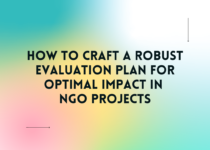7 Essential Steps for an Effective Literature Review: Navigating the Scholarly Landscape
Introduction: 7 Essential Steps for an Effective Literature Review, a literature review is a critical component of scholarly writing, serving both as a foundation for academic research and a means to contextualize the current state of knowledge on a particular subject. Essentially, it is a comprehensive examination and synthesis of existing scholarly works, including articles, books, and other academic sources, relevant to a specific topic or research question.
The purpose of a literature review extends beyond summarizing existing literature; it aims to identify gaps, patterns, and trends within the research landscape. By exploring the nuances of prior studies, a literature review lays the groundwork for new investigations, guiding researchers toward informed hypotheses and methodologies. In essence, it serves as a roadmap for navigating the academic terrain, offering valuable insights that contribute to the advancement of knowledge within a given field.
Before we venture forth into literature review, let us get on the same page, generally, literature review is done as a prerequisite for a new research.
Importance of Literature review in the paradigm of research
In the paradigm of research, a literature review holds paramount importance as it serves as the intellectual anchor, guiding the trajectory and depth of scholarly inquiry. It not only establishes the context and rationale for a study but also identifies gaps, shaping precise research questions. This critical analysis informs methodological choices, preventing duplication of efforts and ensuring the validity of findings.
The literature review contributes to building a robust theoretical framework, fostering critical thinking, and synthesizing knowledge within a particular field. It is an indispensable component that not only informs the current research but also propels the collective understanding of the subject matter, providing researchers with a comprehensive foundation for their scholarly endeavors.
7 Essential Steps for an Effective Literature Review
In the following sections, we will unveil the concrete steps essential for crafting an effective literature review. From defining scope to synthesizing information, these steps provide a clear roadmap for a comprehensive and impactful exploration of existing scholarly works.
Step 1: Define the Scope and Objectives (7 Essential Steps for an Effective Literature Review)
IDENTIFYING THE RESEARCH QUESTION
Identifying the research question is a crucial initial phase in the literature review process. It requires a thoughtful examination of the chosen topic, leading to the formulation of a clear and concise research question or set of questions. This step serves as a guiding beacon for the entire literature review, helping researchers define the scope and boundaries of their inquiry. A well-defined research question not only facilitates a focused literature search but also ensures that the subsequent analysis and synthesis of scholarly works directly contribute to addressing the specific objectives of the study.
SETTING CLEAR OBJECTIVES
Setting clear objectives is a pivotal step in the literature review process, following the identification of the research question. Objectives act as guideposts, outlining the specific goals and desired outcomes of the review. These objectives can include determining the current state of knowledge on the topic, identifying gaps in existing literature, and evaluating the methodologies employed in previous studies. Clear objectives provide a structured framework for the literature review, helping researchers stay focused and ensuring that the subsequent stages contribute meaningfully to achieving the defined goals.
Step 2: Comprehensive Literature Search (7 Essential Steps for an Effective Literature Review)
EFFECTIVE DATABASE UTILIZATION
Effective database utilization is a critical step in conducting a thorough literature review. Researchers need to identify and access relevant databases in their field, such as academic journals, repositories, and scholarly databases. Utilizing advanced search strategies, including Boolean operators and controlled vocabulary, enhances the precision of the search. Skillful navigation of databases ensures comprehensive coverage of relevant literature, allowing researchers to extract valuable insights and contribute to the depth of their literature review. Efficient database utilization is key to retrieving a diverse range of scholarly works that are essential for a well-rounded and comprehensive review.
SEARCH STRING FORMULATION
Search string formulation involves crafting a well-structured combination of keywords, phrases, and Boolean operators to optimize database searches. Researchers strategically select terms related to their research question and objectives, employing Boolean operators such as “AND,” “OR,” and “NOT” to refine search parameters. The goal is to generate a search string that retrieves relevant and targeted literature. Careful consideration of synonyms, variations, and related terms enhances the search’s comprehensiveness. A thoughtfully constructed search string is instrumental in efficiently navigating databases and retrieving pertinent scholarly works for a comprehensive literature review.
INCLUSION AND EXCLUSION CRITERIA
In the literature review process, establishing inclusion and exclusion criteria is a pivotal step to systematically filter and evaluate relevant studies. Inclusion criteria define the characteristics that make a study eligible for consideration in the review, ensuring alignment with the research question and objectives. Conversely, exclusion criteria delineate factors that disqualify a study from inclusion. These criteria may encompass publication date, study design, geographic location, or other specific parameters. By clearly defining these criteria, researchers maintain transparency and consistency in their selection process, ultimately contributing to the rigor and relevance of the literature review.
Step 3: Critical Evaluation of Sources (7 Essential Steps for an Effective Literature Review)
ASSESSING SOURCE CREDIBILITY
Assessing source credibility is a critical step in the literature review process, ensuring that the selected studies contribute reliable and authoritative information to the research inquiry. Researchers must evaluate the credentials of authors, the reputation of the publishing source, and the methodology employed in the studies. Peer-reviewed journals and reputable publishers often indicate a higher level of credibility. Scrutinizing the currency of the information and checking for potential biases further enhances the reliability of selected sources. A rigorous assessment of source credibility is essential for maintaining the integrity and trustworthiness of the literature review’s findings.
EVALUATING STUDY DESIGN AND METHODOLOGY
Evaluating study design and methodology is a crucial aspect of a comprehensive literature review. Researchers must critically assess the research methods employed in selected studies to ensure the validity and reliability of their findings. This involves scrutinizing the study’s design, sampling methods, data collection techniques, and statistical analyses. Understanding the strengths and limitations of each study’s methodology allows researchers to gauge the overall quality of the evidence presented. A meticulous evaluation of study design and methodology is instrumental in drawing meaningful conclusions and contributing to the robustness of the literature review.
RECOGNIZING BIAS AND LIMITATIONS
Recognizing bias and limitations is an integral part of a thorough literature review. Researchers should be attentive to potential biases in the selected studies, such as publication bias, funding bias, or methodological bias. Additionally, understanding the limitations of each study, whether they relate to sample size, generalizability, or other constraints, is crucial for a nuanced interpretation of the findings. Acknowledging bias and limitations contributes to the transparency and humility of the literature review, allowing researchers and readers to contextualize the evidence and draw informed conclusions.
Step 4: Organize and Synthesize Findings (7 Essential Steps for an Effective Literature Review)
CATEGORIZING LITERATURE
Categorizing literature is a key organizational step in the literature review process, where researchers systematically classify the selected studies based on themes, methodologies, or other relevant criteria. This categorization aids in synthesizing information, identifying patterns, and highlighting gaps in the existing body of knowledge. Researchers may create thematic clusters, chronological divisions, or methodological categories to structure their literature review effectively. Categorizing literature enhances the clarity of the review, providing a roadmap for readers to navigate the diverse range of studies and grasp the broader trends and implications within the chosen research domain.
IDENTIFYING PATTERNS AND THEMES
Identifying patterns and themes is a critical analytical step in the literature review process. Researchers systematically examine the categorized literature to discern recurring concepts, trends, or ideas across multiple studies. Recognizing these patterns allows for a deeper understanding of the subject matter and aids in synthesizing the diverse information gathered.
Themes may emerge based on common findings, conflicting evidence, or evolving perspectives within the selected studies. This process of identifying patterns and themes contributes to the construction of a cohesive narrative in the literature review, illuminating the broader implications and knowledge gaps in the research field.
SYNTHESIZING KEY CONCEPTS
Synthesizing key concepts is the culmination of the literature review process, where researchers integrate and analyze the identified patterns and themes to derive meaningful insights. This involves drawing connections between various studies, evaluating the overall body of evidence, and synthesizing the collective knowledge on the chosen topic.
By synthesizing key concepts, researchers can provide a comprehensive overview of the current state of understanding, address the research question, and offer valuable contributions to the academic discourse. This synthesis not only forms the backbone of the literature review but also serves as a foundation for future research directions and scholarly endeavors in the field.
Step 5: Identify Gaps and Emerging Trends (7 Essential Steps for an Effective Literature Review)
RECOGNIZING KNOWLEDGE GAPS
Recognizing knowledge gaps is a crucial aspect of a thorough literature review. As researchers synthesize the existing body of literature, they should actively identify areas where information is limited, contradictory, or insufficient. These gaps highlight opportunities for future research and contribute to the scholarly discourse by indicating areas where further investigation is needed. Recognizing knowledge gaps is not only a means of acknowledging the boundaries of current understanding but also serves as a call to action for researchers to address these gaps and advance the field. This awareness of gaps in the literature adds depth and significance to the overall contribution of the literature review.
IDENTIFYING AREAS FOR FUTURE RESEARCH
Identifying areas for future research is a natural extension of a comprehensive literature review. As researchers recognize knowledge gaps and assess the limitations of existing studies, they can pinpoint specific areas within their chosen field that warrant further investigation. This forward-looking perspective contributes to the academic conversation by proposing avenues for future inquiry and innovation. By highlighting these areas, researchers not only guide their own future work but also provide valuable insights for others in the academic community seeking to expand the boundaries of knowledge within the subject matter. Identifying areas for future research enhances the literature review’s impact and relevance to the broader scholarly landscape.
RECOGNIZING EMERGING THEMES
Recognizing emerging themes is a dynamic aspect of a literature review, involving the identification of novel concepts, trends, or perspectives that are gaining prominence within the field of study. As researchers synthesize the existing literature, they should remain attentive to new and emerging themes that may signify evolving areas of interest or shifts in research focus.
These emerging themes contribute to the ongoing discourse and provide insight into the dynamic nature of the academic landscape. Recognizing and acknowledging emerging themes in a literature review reflects a keen awareness of the field’s evolution and can inspire further exploration of cutting-edge topics in future research endeavors.
Step 6: Drafting the Literature Review (7 Essential Steps for an Effective Literature Review)
STRUCTURING THE REVIEW
Structuring the review is a critical step in presenting the findings of a literature review in a clear and organized manner. Researchers must carefully plan the layout and organization of the review to guide readers through the diverse array of studies and insights.
Common structural approaches include chronological order, thematic grouping, or methodological categorization, depending on the nature of the research question and the available literature. A well-structured review not only enhances readability but also facilitates the identification of key concepts, patterns, and knowledge gaps. Thoughtful structuring ensures that the literature review effectively communicates the depth and breadth of the existing research while maintaining a coherent narrative.
INCORPORATING CRITICAL ANALYSIS
Incorporating critical analysis is a fundamental aspect of a rigorous literature review. Beyond summarizing existing studies, researchers must engage in a thoughtful evaluation of the methodologies, findings, and implications of each source. Critical analysis involves assessing the strengths and weaknesses of individual studies, considering potential biases, and weighing the overall quality of the evidence.
This evaluative process enhances the credibility of the literature review, providing readers with a nuanced understanding of the research landscape. By incorporating critical analysis, researchers not only contribute to the scholarly discourse but also demonstrate a discerning approach to synthesizing and interpreting the available literature.
MAINTAINING COHERENCE AND FLOW
Maintaining coherence and flow is crucial in ensuring that a literature review is effectively communicated to the reader. Researchers should carefully craft the narrative to create a seamless connection between different sections, themes, and concepts. This involves using clear and logical transitions, guiding the reader from one idea to the next. Cohesiveness ensures that the literature review is not a mere collection of studies but a well-organized and interconnected exploration of the chosen topic. Attention to maintaining coherence and flow enhances the reader’s comprehension, allowing them to follow the researcher’s thought process and insights throughout the review. This skillful organization contributes to the overall impact and effectiveness of the literature review.
Step 7: Continuous Revision and Updating (7 Essential Steps for an Effective Literature Review)
REGULARLY REVIEWING AND UPDATING LITERATURE
Regularly reviewing and updating the literature is a practice essential for maintaining the relevance and currency of a literature review. The field of research is dynamic, with new studies and perspectives continually emerging. Researchers should periodically revisit their literature review to incorporate the latest findings, address any gaps identified over time, and ensure that the review reflects the most current state of knowledge in the chosen area. This ongoing process of review and update not only enhances the quality of the literature review but also demonstrates the researcher’s commitment to staying informed and engaged with the evolving landscape of their field. Regular updates contribute to the longevity and enduring value of the literature review as a scholarly contribution.
STAYING INFORMED ABOUT RECENT DEVELOPMENTS
Staying informed about recent developments is a crucial practice for researchers aiming to keep their literature reviews current and relevant. The landscape of research is ever-evolving, with new studies, methodologies, and perspectives continuously emerging. Researchers should actively engage with scholarly journals, conferences, and academic discussions to stay abreast of the latest developments in their field. By staying informed, researchers can identify new trends, methodologies, or theories that may impact their literature review. This proactive approach ensures that the literature review remains up-to-date, providing readers with a comprehensive understanding of the most recent and pertinent contributions to the subject matter. Regularly seeking out and integrating recent developments strengthens the overall quality and impact of the literature review.
ENSURING CURRENCY AND RELEVANCE
Ensuring currency and relevance is paramount in maintaining the effectiveness of a literature review. The dynamic nature of research demands that scholars regularly assess the timeliness of the included studies and update the review to reflect the most recent advancements in the field. This involves not only staying informed about recent publications but also re-evaluating the significance of existing sources in light of evolving research trends.
Researchers should strive to incorporate the latest studies, methodologies, and perspectives, ensuring that their literature review remains a current and comprehensive resource for readers. This commitment to currency and relevance not only enhances the scholarly impact of the review but also underscores the researcher’s dedication to providing a valuable and up-to-date contribution to the academic conversation in their field.
Conclusion
In conclusion, the role of a literature review in shaping research is akin to acknowledging its pivotal position as the compass guiding the trajectory of scholarly inquiry. The review serves not only as a repository of past studies but as the foundation upon which new research questions are built. By critically analyzing existing literature, researchers identify gaps, challenges assumptions, and formulate informed hypotheses, essentially sculpting the landscape for their own investigations. The literature review, therefore, is not a passive backdrop but an active collaborator in the research process, contributing to the definition, refinement, and direction of academic exploration. It symbolizes the interplay between the wisdom of the past and the innovation of the future, illustrating that research is a continuum where each review shapes and is shaped by the unfolding narrative of discovery.
The steps provides a structured approach to guide readers through the key steps involved in conducting an effective literature review, emphasizing the importance of navigating the scholarly landscape. Each step is designed to contribute to a comprehensive and well-informed review of existing literature, ensuring its relevance and impact on the research process.
Here is a Free Sample Research Protocol Template>>>>>>>Try Now
LEARN to Craft a Winning Research Protocol>>>>>>>>Go Here
Related Good Reads, Link
Hey, STEAL our Best Premium Content For Absolutely Free, Check Out the Links below
HOPE these will add value to your existing skills and knowledge
Our information bears no cost (it’s absolutely FREE), don’t let valuable information slip away.
Join our community of avid readers who are always in the know. Subscribe to our website; stay connected and engaged with the latest news, trends, and developments by subscribing today.
(PUSH the bell ICON)
Leverage the power of knowledge to propel your organization to new heights. Don’t miss out to explore our content
- Latest Funds for NGOs,
- NGO Jobs
- Resources (Helpful Guides and Courses)
- Premium Resources
- NGO related articles
Empowering Humanity through Funds, Resources and Collective Action
Sharing is Appreciated



